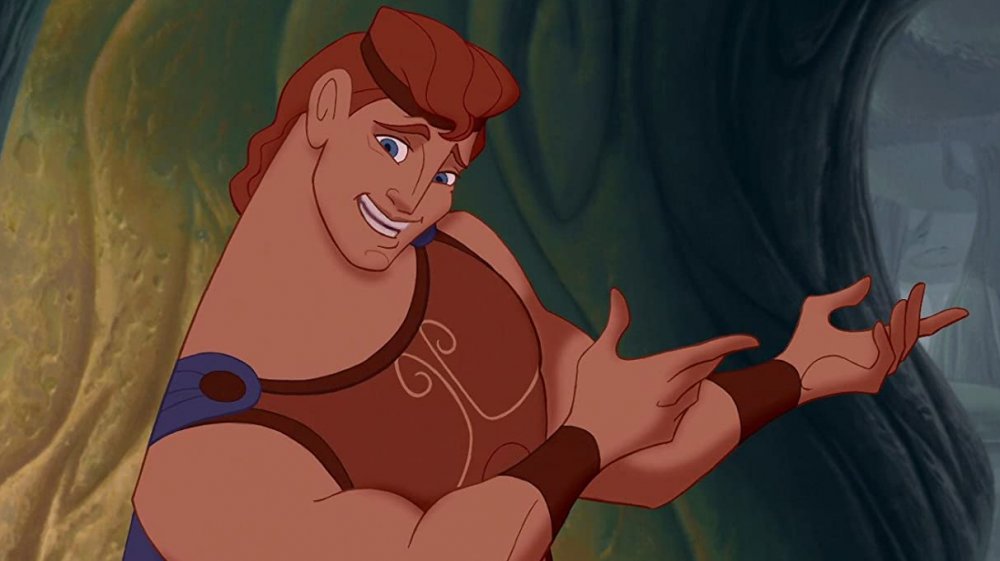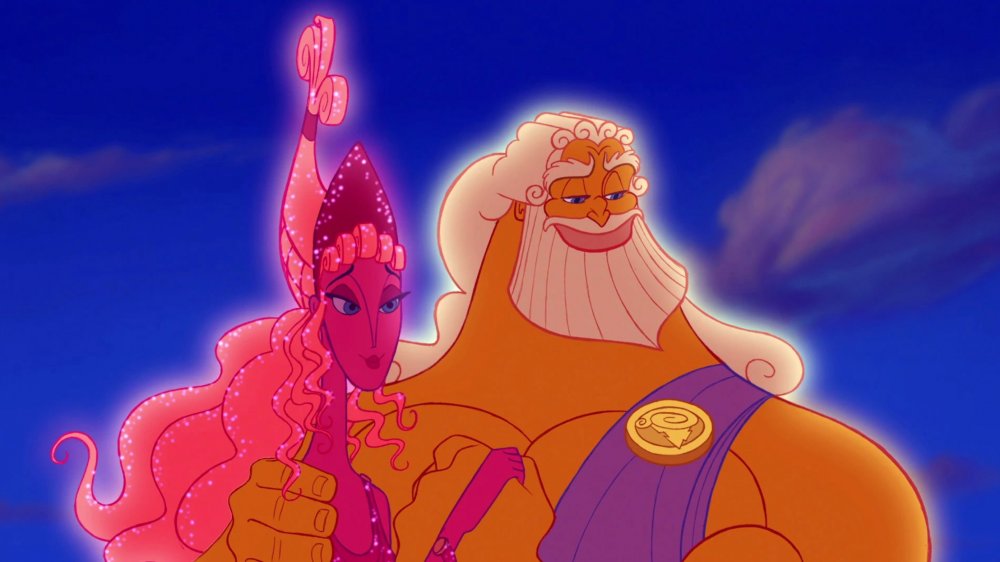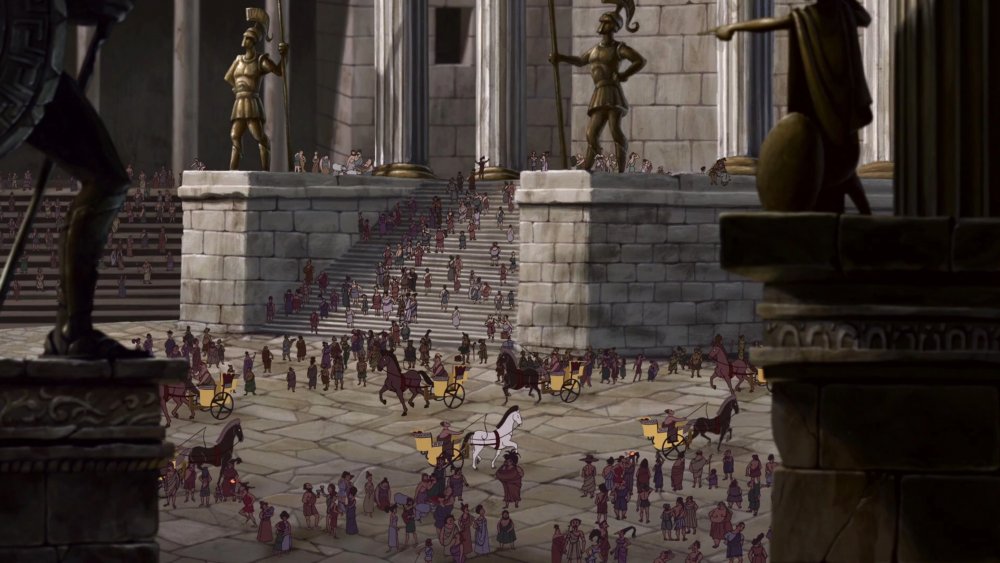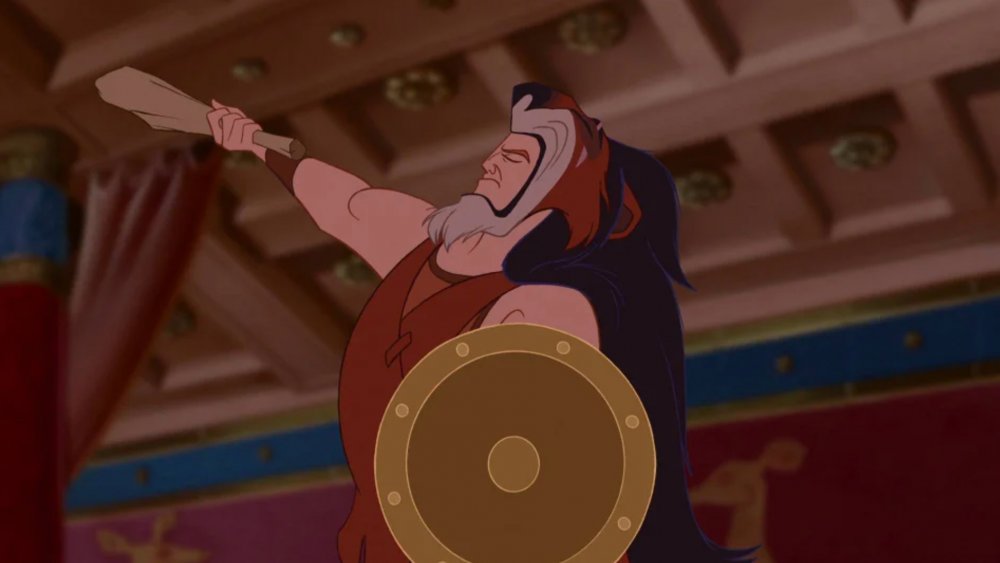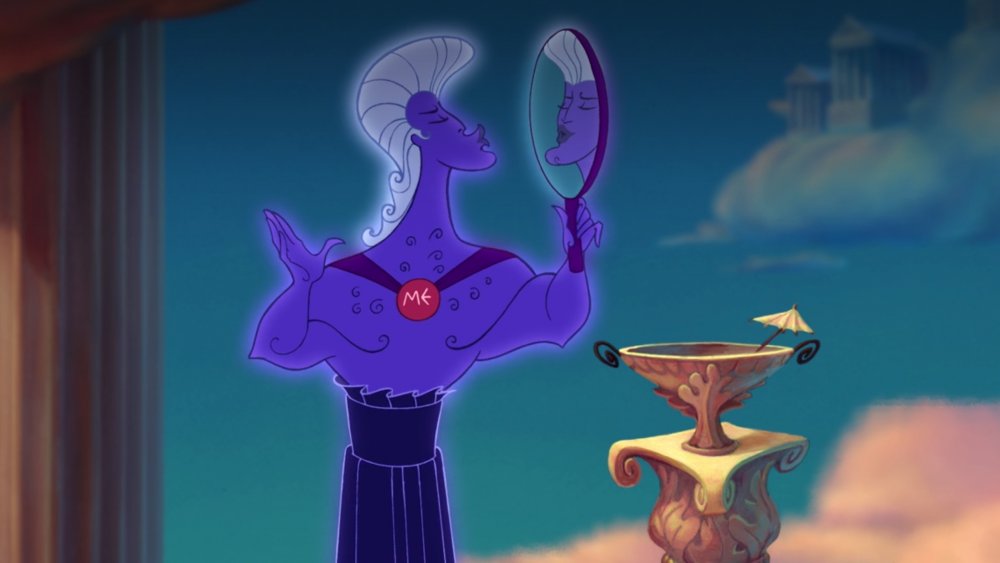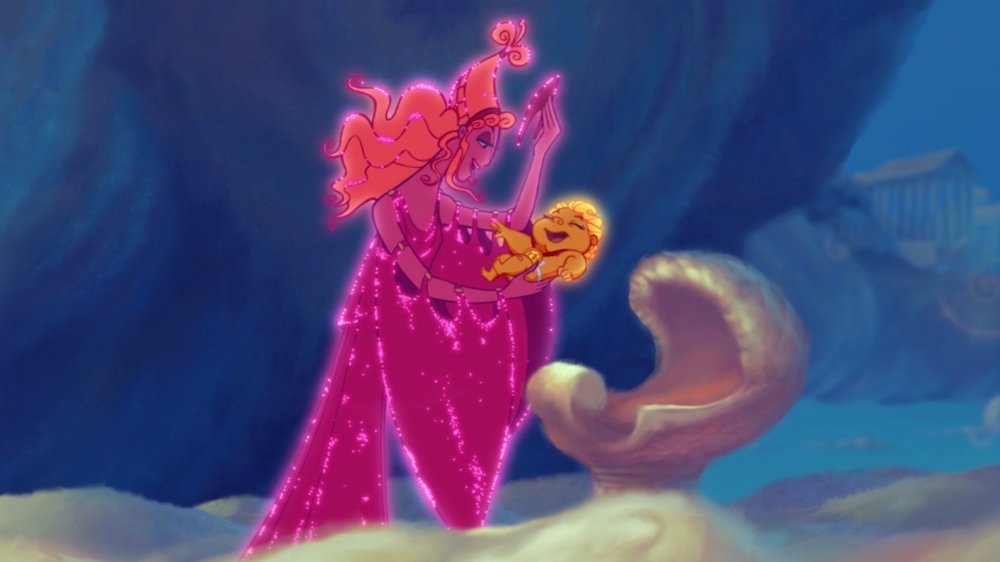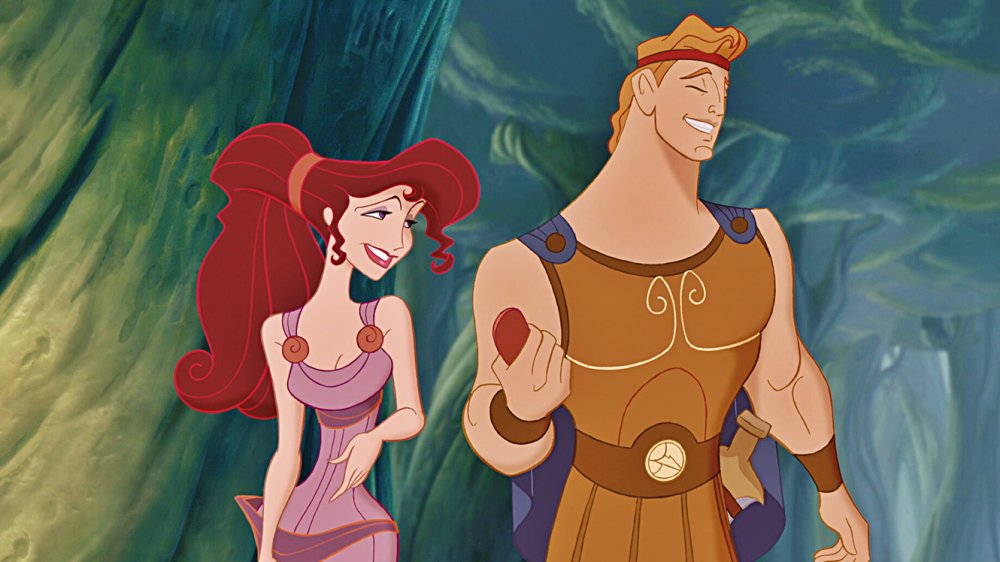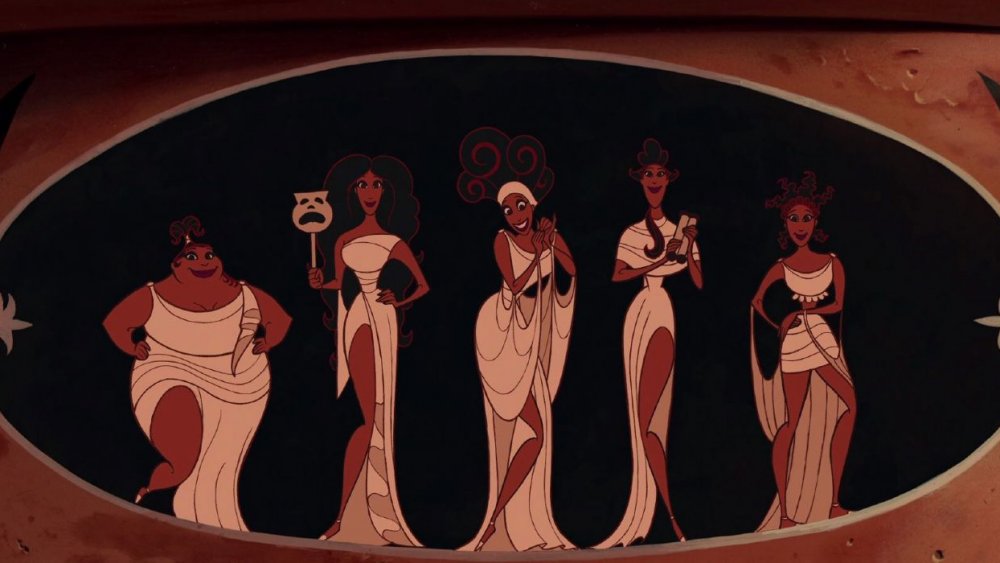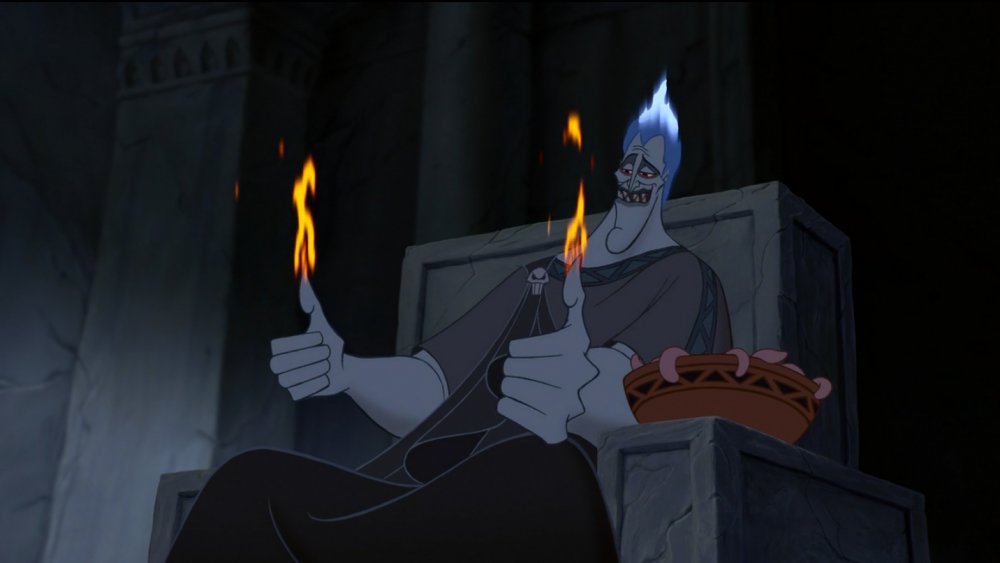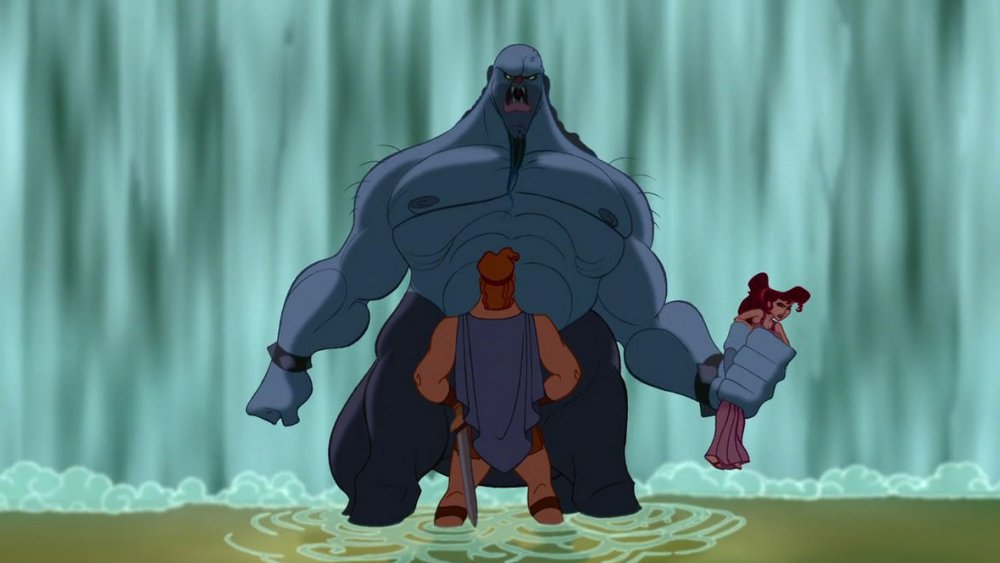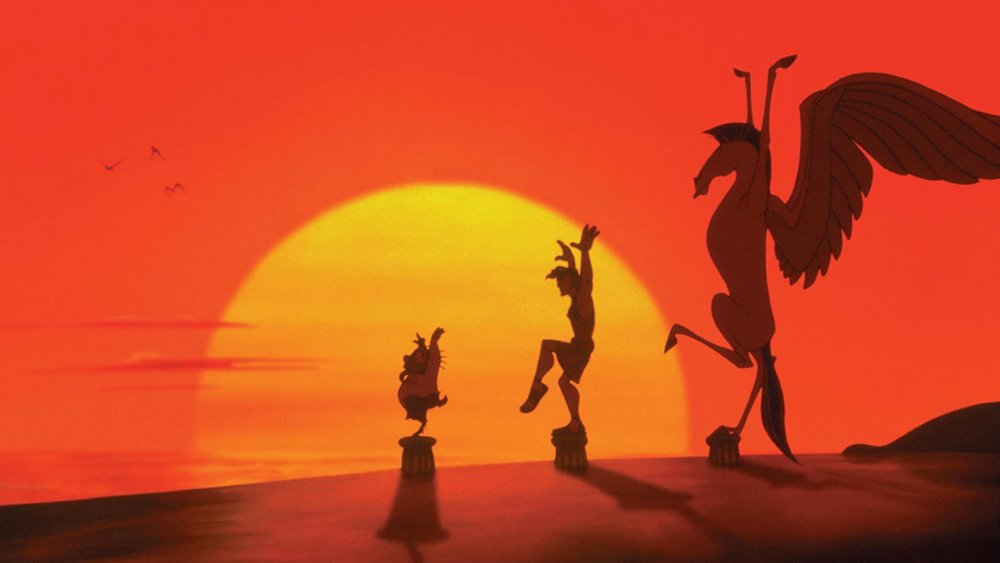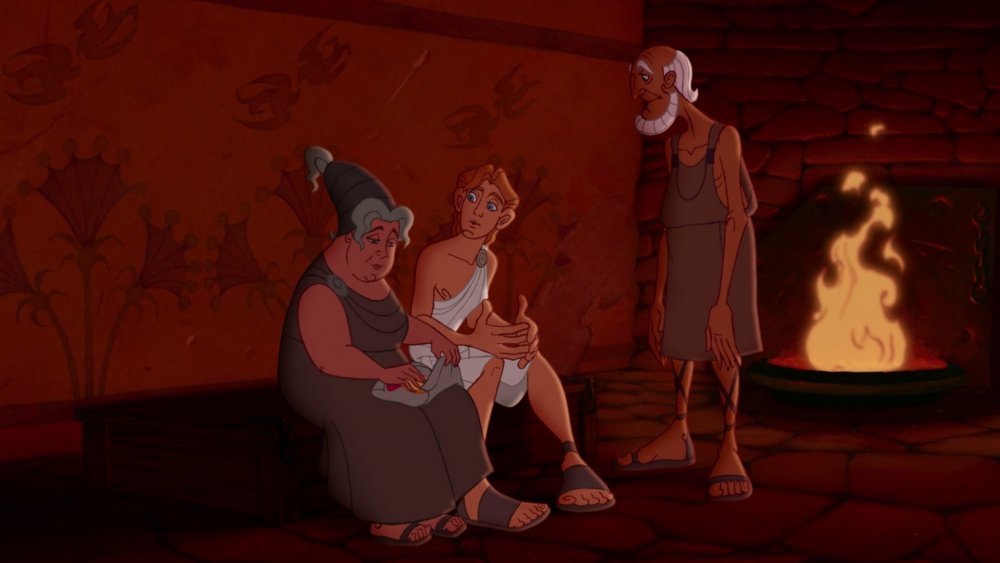Things Only Adults Noticed In Hercules
Released in 1997, Hercules is a classic Disney flick directed by Ron Clements and John Musker and starring the likes of Danny DeVito and James Woods. And while it may not have been the financial success the company was hoping for, it still resonates with many audiences today because of its unique art style, Gospel sound, and lovable characters. But believe it or not, there's a lot more happening in this film than meets the mortal eye.
Upon closer inspection, fans may find that for a Disney film, Hercules manages to slip in quite a few jokes and pop culture references that could easily go unnoticed by younger audiences. While some references are nods to Greek mythology or Greek writers, some jokes are a bit more risque and better suited for an older crowd. From Disney Easter eggs to mythological origins, here's a list of the things only adults will notice when watching Disney's Hercules.
Adults will notice the Disney story is nothing like the actual myth
Greek mythology isn't exactly kid-friendly. There's plenty of death, despair, extramarital affairs, drinking, cannibalism, and an array of terrifying monsters that would give most children nightmares. With this in mind, it makes sense that the film had to take liberties regarding the actual legend of Hercules.
The film shows Zeus and Hera as being in a healthy, loving relationship. However, this couldn't be further from the case. In mythology, Zeus has a reputation for cheating on his wife with an extensive list of women, a fact that Hera is well aware of and resents about her husband. Of course, the Disney version can't exactly portray Zeus this way given their main demographic, but there's an even more significant deviation between the myth and the film. Hercules isn't even Hera's son, according to mythology. Contrary to the film, Hercules wasn't born to two divine parents. Instead, he's the child of Zeus and the mortal woman Alcmene.
The main reason this change was made in the film is likely because Hera is the reason behind Hercules' hardships in the original story, as opposed to Hades. Hera resents Hercules, and as a result, she tries to have him killed. Additionally, Megara is most likely a combination of two characters from mythology — Megara and Hercules' second wife, Deianira. In a grim turn of events, Hercules actually kills Megara in the original myth. So much for happily ever after.
Thebes is basically New York City
In Hercules, the city of Thebes, otherwise known as "the Big Olive," is a major metropolis known for its high energy and hustle-and-bustle, much like a modern-day New York City. Basically, Thebes is one giant New York stereotype. From the pita bread carts to the doomsday graffiti smeared around the city walls, Thebes reflects many aspects of the Big Apple itself, for better and for worse.
Much like New York, Thebes and all of its inhabitants are always in motion. There are chariots blazing back and forth while pedestrians wait at what appear to be ancient crosswalks. Large crowds gather in the agora, and Hercules is clearly overwhelmed by the city environment. When Hercules and company first arrive, they nearly find themselves trampled by a chariot driver, only to be saved by Phil, who's more seasoned in navigating the hectic city. Enraged by the rude driver, the satyr yells, "Hey, I'm walkin' here!" in a stereotypical New Yorker accent, further cementing the connection to modern New York (as well as being a Midnight Cowboy reference, a film that takes place in Manhattan).
Much like New York, Thebes also has a bit of a shady side as well, especially for a country-body like Hercules, who's never set foot in a big city before. At one point, the gang is approached by a man in an oversized trench coat who, at first glance, flashes the unsuspecting group. However, this is a Disney flick, so the flasher is actually just a sundial salesman with his stock hidden underneath his coat.
Scar from The Lion King makes an appearance in Hercules
In one particular scene, Hercules is seen wearing a lion skin. For many viewers, this wouldn't raise any eyebrows, especially since the lion is likely a nod to the Nemean Lion, the first of the 12 Labours that Hercules had to face in the original mythology. However, more seasoned Disney fans may notice something a little too familiar about the ferocious feline. From the uniquely brown fur and black mane to the scar under the big cat's eye, the lion looks exactly like Scar from The Lion King.
This callback to The Lion King is likely a reference to a specific line from the film where Zazu tells Mufasa that Scar would "make a very handsome throw rug." Overall, it's a bit uncomfortable to see Hercules and Phil thoughtlessly parading around the lifeless body of another Disney character on-screen. While this is undoubtedly a clever nod to another popular Disney title, the implications are rather dark. In this universe, Scar was killed and then skinned for his fur coat, which is definitely a morbid end for the recognizable villain.
Only adults will notice the Narcissus joke
At the beginning of the film, all of the gods and goddesses gather at Mount Olympus to celebrate the birth of Zeus and Hera's newborn son, Hercules. The various deities are lounging around, talking, drinking from fancy glasses, and enjoying each other's company. As the crowd partakes in the joyous celebration, Hermes zips through the scene and comments to Zeus, "I haven't seen this much love in a room since Narcissus discovered himself." This joke is a nod to the Greek myth of Narcissus, a man who infamously fell in love with his own reflection.
Narcissus was a man of unparalleled beauty who spurned the advances of the nymph Echo. This earned Narcissus the wrath of the gods, who made the man fall in love with his own reflection as he gazed into a pool of water. Narcissus, unable to have his obsessive love with himself reciprocated, was essentially driven to insanity, and he eventually died of starvation as he stared at his reflection. Luckily, it doesn't seem like anyone at Zeus and Hera's party is in danger of withering away there as poor Narcissus did in the famous Greek myth.
At least Hercules doesn't have an Oedipus complex
After his date with Meg, Hercules raves about the play the pair just saw, saying, "And then that play, that Oedipus thing? Man, I thought I had problems!" Apparently, the two saw a performance of Sophocles' Oedipus Rex, an Athenian tragedy you wouldn't expect to pop up in a Disney title.
In the play, Oedipus unknowingly kills his father, King Laius, and becomes the king of Thebes. Aside from killing his own father, once crowned king, Oedipus unknowingly marries his mother and fathers several children. It's later revealed that Oedipus was prophesied to kill his father from birth, and so King Laius had tried to send Oedipus away when he was only an infant. In the end, the prophecy was ultimately fulfilled when Oedipus returned, proving that you can't escape fate.
Sophocles' story also served as the inspiration behind the naming of the psychoanalytic term known as the Oedipus complex, coined by Sigmund Freud. According to Freud, the Oedipus complex is a stage in a child's development where they experience feelings of jealousy or rivalry towards their same-sex parent regarding the parent of the opposite sex. So when Hercules remarks about not having as many problems as Oedipus, he's basically saying, "At least I didn't kill my dad and marry my mom." Considering the dark themes in Oedipus Rex and the commonly understood psychoanalytic premises associated with the tragedy, it's definitely a strange title to be referenced in a children's animated film.
Meg is a different kind of damsel
Meg is beloved for her sassy attitude and sly remarks that set her apart from many of the other Disney leading ladies. However, what actually makes Meg stand out from the Disney princesses isn't just her saucy personality but her experiences in the dating arena.
Disney loves to focus on happily-ever-after endings, and as a result, many Disney characters have optimistic and slightly naive views of love. This is mainly because, prior to their love interest in their respective film, they haven't dated at all. Meg, on the other hand, hasn't only dated other men before Hercules, she's been outwardly betrayed by the man she loved at the cost of her own freedom. As a result, Meg has a far more realistic, and at times pessimistic, view of love and men. A prime example of this is after Hercules saves her from Nessus, she makes the quip regarding men, "They think 'no' means 'yes,' and 'yes' means 'take me, I'm yours.'"
It's because of her negative experiences that Meg has trouble warming up to Hercules. Her entire song, "I Won't Say (I'm in Love)," shows her struggling to embrace her feelings without losing her common sense and falling prey to another bad relationship. For a Disney lead, Meg is undoubtedly a far cry from the typical doe-eyed adventure seeker, and that's why she's still so popular to this day.
The Muses are a literal Greek chorus
Not every double entendre has a second, more adult meaning behind it. Sometimes it's just the result of clever wordplay. This is the case with the Muses. In the film, the Muses are the film's narrators that guide viewers through the narrative. Their songs also allow for a natural passage of time between significant events in the film. Making the goddesses the film's narrators is a smart modern adaption of the goddesses from mythology who presided over the arts. But aside from this adaptation of the characters, there's another connection to ancient Greek theater.
Ancient Greek theater would've looked very different from a production of The Phantom of the Opera or Hamilton. One of the most significant differences in the structure was in how the characters were written. In addition to having roles for the main characters, ancient Greek theater also frequently employed a group of actors to serve as the narrators of their theatrical productions. This group was the chorus, and they usually had one member who was the chorus leader. So to have the Gospel-style chorus of singers also occupy the role of the Greek chorus in this film is an interesting blend of mythology and ancient Greek entertainment.
Hades could've easily avoided failure
After the Fates prophesy that Hercules will destroy Hades' plans of overthrowing Zeus, Hades realizes that for his evil plan to take flight, he'll have to kill baby Hercules. He then sends Pain and Panic, his two bumbling sidekicks, who almost immediately botch the entire operation. Instead of having Hercules ingest the entire bottle of poison they were given, they mess up, turning him mortal instead. So then, what do Pain and Panic do in this situation? They leave Hercules for two mortal humans to raise. Even worse, they neglect to tell Hades that Hercules isn't dead for many years. So imagine Hades' surprise when he runs into Hercules, entirely grown up and saving damsels in the woods. In the words of the god himself, "I'm about to rearrange the cosmos, and the one schlemiel who can louse it up is waltzing around in the woods!"
But really, Hades can't place all of the blame on Pain and Panic. It's confusing as to why Hades left such an essential task to his minions in the first place. More confusing is why he never even bothered to check for himself if the job was ever finished. Presumably, he can see for himself each soul that enters the Underworld without having to leave the comfort of home. Shouldn't he have been on standby to make sure Pain and Panic didn't mess things up? This is pretty lazy behavior from someone who wants to become the king of Mount Olympus.
Hercules makes a quick check between Nessus' legs
As a part of Hades' grand plan, he figures it would be nice to get more than just a few titans on his side. In the middle of the film, these monster co-conspirators do little more than appear in a montage where Hercules makes short work of all of them, but at the beginning of the film, we see Hades trying to get the river guardian Nessus to join his cause through negotiating with Meg. And this eventually leads to a joke that's, well, a little edgy for a kids' film.
Nessus, the centaur, is a terrifying creature. The half-man, half-horse is first seen holding Meg against her will after her mission from Hades goes south. Hercules immediately springs into action to save her. However, he quickly realizes he's not quite sure how to address the river guardian. Hercules begins, "Excuse me ..." but he trails off, and his confidence seemingly wanes as a slight look of confusion crosses his face. Hercules pauses briefly and looks downward between the centaur's legs. Reassured by what he's seen, Hercules then straightens up and confidently continues, "... sir!" If Hercules wanted to talk Nessus down and diffuse the situation without resorting to violence, this probably wasn't the most socially graceful way to begin negotiating the release of Meg.
Modern references abound in Hercules
The allusions to modern life in Hercules show that life in ancient Greece wasn't so different from life today. Well, at least in Disney's version of ancient Greece, anyway. For example, as a new soul enters Hades' realm, there's a number counter that says "over 5,000,000,001 served," mimicking McDonald's, which proudly advertised "over 99 billion sold." That's one of the earliest modern references in the film, but it surely isn't the last. Later, when Pain and Panic are pretending to be children trapped under a boulder, one of them shouts for someone to "call IX-I-I" instead of calling 911.
One of the best places to find these modern references is during the film's musical numbers. During Phil's song, "One Last Hope," there's a training montage where Phil, Hercules, and Pegasus are all standing on pillars training in front of a sunset. This is a callback to the training regimen of Mr. Miyagi in The Karate Kid. There are a ton of references in the song "Zero to Hero." One of the more fleeting examples is when the movie shows the line outside of the Hercules store, and we see the two shops located on either side of the building. These stores are named Aphrodite's Secret and Column and Barrel, alluding to Victoria's Secret and Crate and Barrel, respectively. The song features more nods to the modern day, such as the Grecian Express credit card, the Air-Herc sandals, and the Herculade drink.
The film is littered with ancient art references
The film's most prominent and easily recognizable reference to real-world art is likely the Venus de Milo that Hercules takes the arms off while on his date with Meg. But sharp-eyed viewers will find multiple examples of classical art and architecture scattered throughout.
Before Hercules begins his journey, he has an incident at the agora resulting in its destruction. Though the construction is slightly different, the architecture bears a striking resemblance to St. Peter's Square in Rome. After this socially traumatizing incident, Hercules talks to his adoptive parents, where another bit of ancient art can be found. Looking at the interior design of their home, the wall design looks like Akrotiri's Spring Fresco, or is at least partly inspired by it.
Another example of ancient architecture can be seen in "Go the Distance," as Hercules enters the Temple of Zeus. Sitting tall is a colossal stone likeness of the thunder god which comes to life to tell his son about the necessity of becoming a true hero. The actual temple used to house a reasonably similar statue, though the historical monument was accented with a gold staff not seen in the film. Finally, the last easily recognizable art reference appears during the song "I Won't Say I'm in Love," when Meg walks past the Muses standing as pillars in reference to the Caryatids of the Acropolis. While the real Caryatids are grander in scale, they certainly lack a similar musicality.
